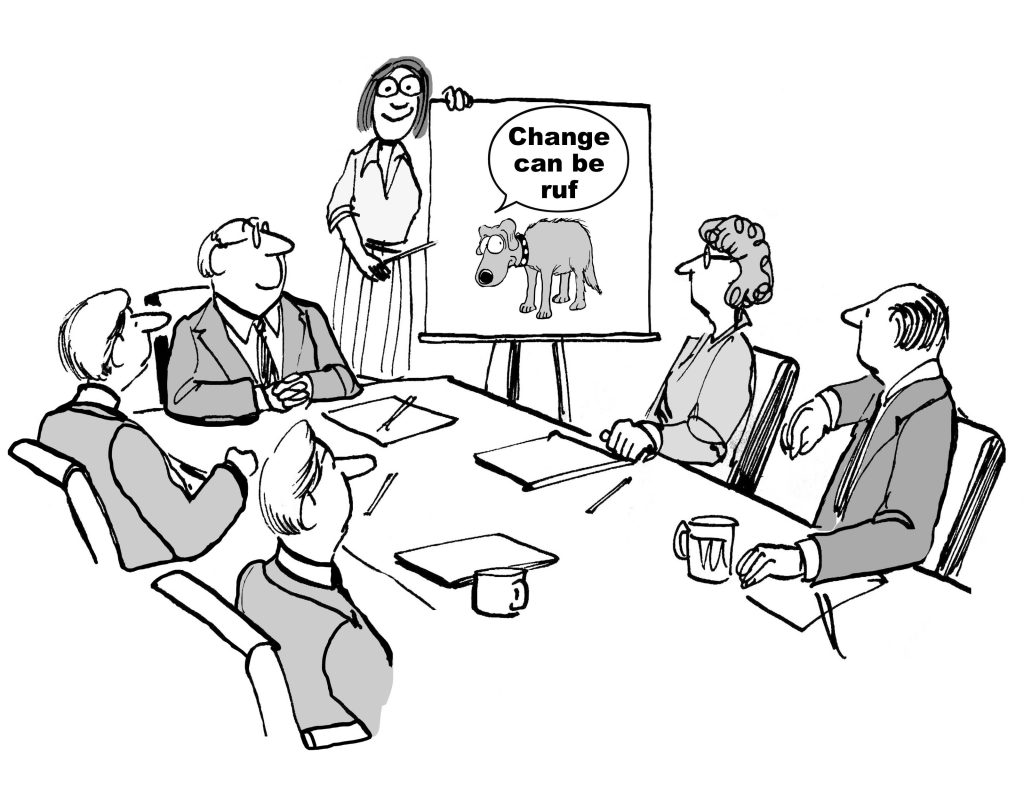Change does not come easy for human beings. Unlike most species, we are hardwired to resist it. But like it or not, change is inevitable.
Our organization has always been relatively stable. Many employees have been with the Edward Lowe Foundation for more than 20 years — some for more than 30. So, I intuitively knew that our workforce was graying. Yet while reviewing some HR data a few months ago, I realized that more than half of our staff were 60 years or older. About the same time, one of our directors told me that she was planning to retire in a few months.
I felt as though I had been hit with a two-by-four! Clearly, we needed to focus on our future staff — not only by recruiting new talent but also elevating talent that already existed in the organization and might be underutilized. In response, I started to scrutinize our org chart and think about how departments were functioning and where we might need to add resources.

Of course, things don’t remain secret. As I was working on this reorganization, watercooler talk and hallway conversations began to bubble up. I recognized that people were anxious, and past experience has taught me how important it is to be transparent.
With that in mind, I began to have individual conversations with each of our employees, including part-timers. I sat in on departmental meetings to reiterate the information. Finally, we had an all-employee meeting. All told, this probably added up to more than 100 conversations. And even though it may have taken a lot of time, I felt it was especially important to have the one-on-one discussions. People were more likely to share information about themselves and their relationships with managers than they would in front of a group.
In each meeting, I repeated the same story, explaining what the changes were, how they affected everyone and why we were making them. I also pointed out that it was OK for employees to disagree with some of the changes; however, I wanted them to get mad and get over it. My philosophy is that if you aren’t “getting juice” (not engaged in what you’re doing) then it’s time to move on, because life is too short.
During my conversations with staff, I also challenged them to embrace change, to do things differently than in the past — and for everyone to be a leader. Some of them expressed reluctance with the latter request, saying “I just want to do my job” and “That sounds like a lot of responsibility.” Yet I disagree. You don’t have to get up in front of the room or manage other people to be a leader. You can lead by delivering exceptional customer service, being an amazing communicator or inspiring others through your work. Everyone leads from their position.
As we move forward, I believe the reorganization is also helping us in ways I hadn’t anticipated. At the foundation, we used to have a history of silos, something our founder Ed Lowe called “the shirts and the skins.” By transferring some individuals into different departments and even shifting a couple of departments into different divisions, we’ll be better balanced — and our culture will be greatly improved.
To sum things up, I’m very excited about the future and our reorganization. During this process, we’ve become more of one team. And we’re already starting to bring on younger talent. Loss of institutional memory is always a challenge, but I’m a big fan of “going young” and fully immersing junior staffers in the game. If they sit on the sidelines, they’re never going to be seasoned. New faces can bring more energy, ideas and efficiency.
Our organization has a wonderful history, but things change, something our founder Darlene Lowe has always recognized. Her design philosophy serves as a perfect metaphor for organizational shifts:
“No design should outlive its usefulness,” Darlene says. “As the function of a building changes, the building’s style should also change. No matter how happy you are with the original design, you must be open to changing it.”
